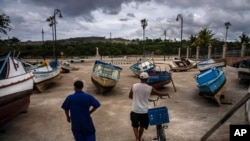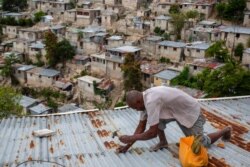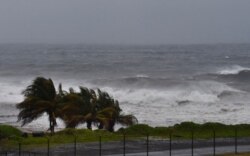Tropical Storm Elsa made landfall in Cuba on Monday, charting a course toward Florida after causing at least three deaths elsewhere in the Caribbean.
Elsa swept over Cuba's south-central coast on Monday with sustained winds near 95 kph, according to Cuba's Meteorology Institute.
It brought a storm surge to the southern coast, along with heavy rains.
Cuban officials said they had evacuated 180,000 people from homes in flood-prone areas. Most of the evacuated went to relatives' homes, while others took refuge in government shelters.
The Associated Press, citing the Caribbean Disaster Emergency Management Agency, reported that the storm had killed one person on St. Lucia and that two people were killed in separate building collapses in the Dominican Republic.
The storm also hit Barbados, where more than 1,100 people reported damaged houses, as well as Haiti and Jamaica.
Cuba's Meteorology Institute predicted that the storm would weaken while passing over central Cuba but could strengthen again slightly when it emerges over the Florida Straits and the southeastern Gulf of Mexico.
Florida Governor Ron DeSantis has declared a state of emergency in 15 counties. Elsa is expected to pass near the Florida Keys early Tuesday and move over parts of Florida's west coast Tuesday and Wednesday, according to the U.S. National Hurricane Center.
"All Floridians should prepare for the possibility of heavy rain, flooding and potential power outages," DeSantis wrote on Twitter.
Elsa was a Category 1 hurricane until Saturday, when it was downgraded to a tropical storm. It is the fifth named storm of the season and also the earliest one on record.
Anticipation of the storm prompted Florida officials to demolish the remaining portion of a residential building in a Miami suburb that partially collapsed nearly two weeks ago. Twenty-seven people were killed in the collapse, and 118 are still missing.
This report includes information from the Associated Press and Reuters news agency.







